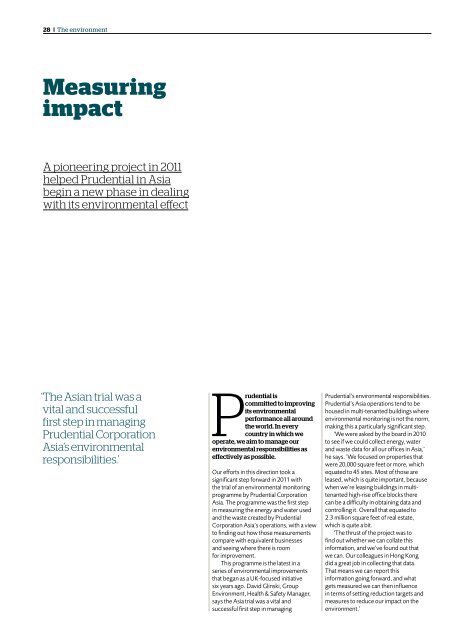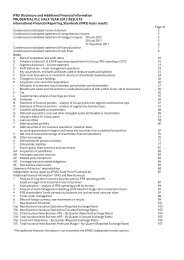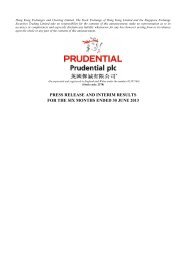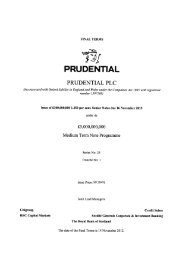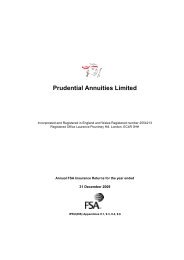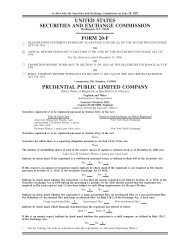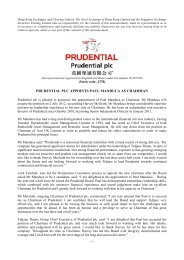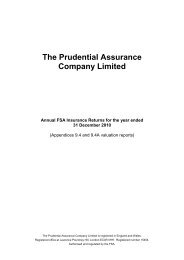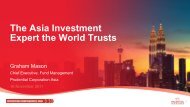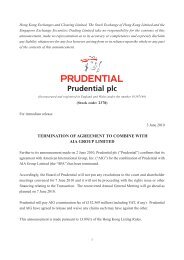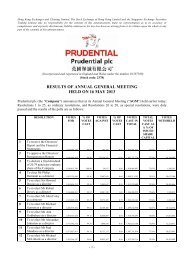Download - Prudential Corporate Responsibility report 2011
Download - Prudential Corporate Responsibility report 2011
Download - Prudential Corporate Responsibility report 2011
You also want an ePaper? Increase the reach of your titles
YUMPU automatically turns print PDFs into web optimized ePapers that Google loves.
28 The environment<br />
Measuring<br />
impact<br />
A pioneering project in <strong>2011</strong><br />
helped <strong>Prudential</strong> in Asia<br />
begin a new phase in dealing<br />
with its environmental effect<br />
‘The Asian trial was a<br />
vital and successful<br />
first step in managing<br />
<strong>Prudential</strong> Corporation<br />
Asia’s environmental<br />
responsibilities.’<br />
<strong>Prudential</strong> is<br />
committed to improving<br />
its environmental<br />
performance all around<br />
the world. In every<br />
country in which we<br />
operate, we aim to manage our<br />
environmental responsibilities as<br />
effectively as possible.<br />
Our efforts in this direction took a<br />
significant step forward in <strong>2011</strong> with<br />
the trial of an environmental monitoring<br />
programme by <strong>Prudential</strong> Corporation<br />
Asia. The programme was the first step<br />
in measuring the energy and water used<br />
and the waste created by <strong>Prudential</strong><br />
Corporation Asia’s operations, with a view<br />
to finding out how those measurements<br />
compare with equivalent businesses<br />
and seeing where there is room<br />
for improvement.<br />
This programme is the latest in a<br />
series of environmental improvements<br />
that began as a UK-focused initiative<br />
six years ago. David Glinski, Group<br />
Environment, Health & Safety Manager,<br />
says the Asia trial was a vital and<br />
successful first step in managing<br />
<strong>Prudential</strong>’s environmental responsibilities.<br />
<strong>Prudential</strong>’s Asia operations tend to be<br />
housed in multi-tenanted buildings where<br />
environmental monitoring is not the norm,<br />
making this a particularly significant step.<br />
‘We were asked by the board in 2010<br />
to see if we could collect energy, water<br />
and waste data for all our offices in Asia,’<br />
he says. ‘We focused on properties that<br />
were 20,000 square feet or more, which<br />
equated to 45 sites. Most of those are<br />
leased, which is quite important, because<br />
when we’re leasing buildings in multitenanted<br />
high-rise office blocks there<br />
can be a difficulty in obtaining data and<br />
controlling it. Overall that equated to<br />
2.3 million square feet of real estate,<br />
which is quite a bit.<br />
‘The thrust of the project was to<br />
find out whether we can collate this<br />
information, and we’ve found out that<br />
we can. Our colleagues in Hong Kong<br />
did a great job in collecting that data.<br />
That means we can <strong>report</strong> this<br />
information going forward, and what<br />
gets measured we can then influence<br />
in terms of setting reduction targets and<br />
measures to reduce our impact on the<br />
environment.’


